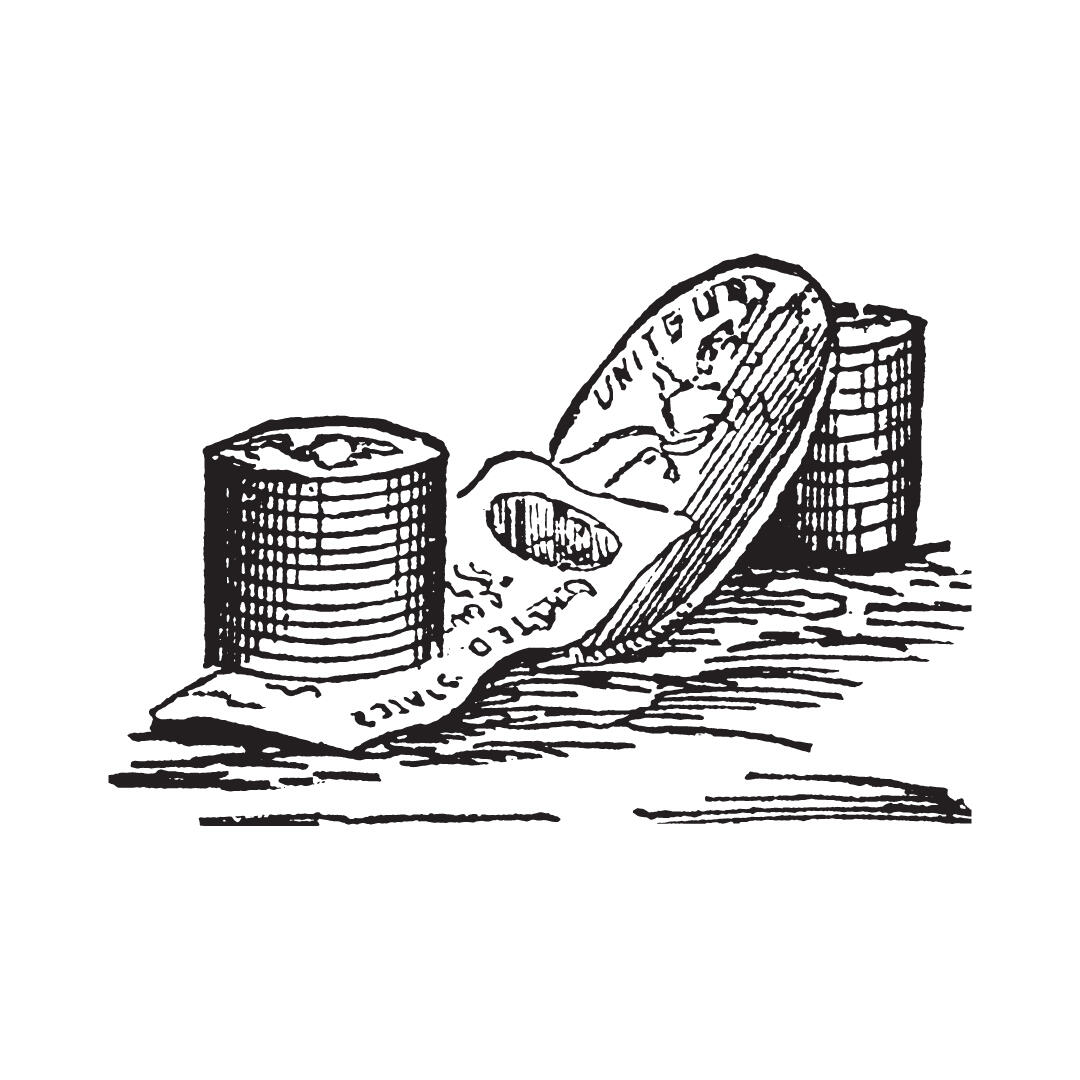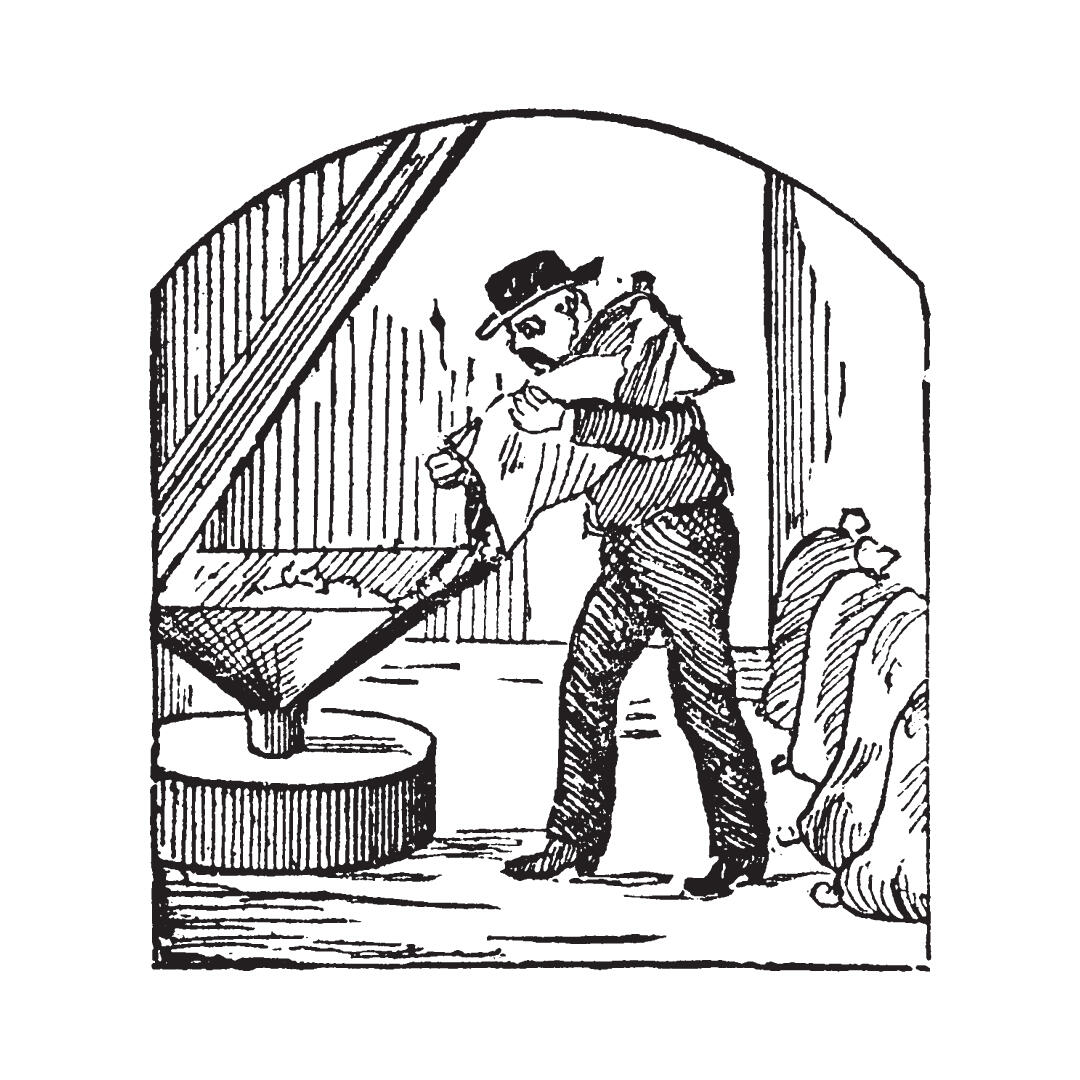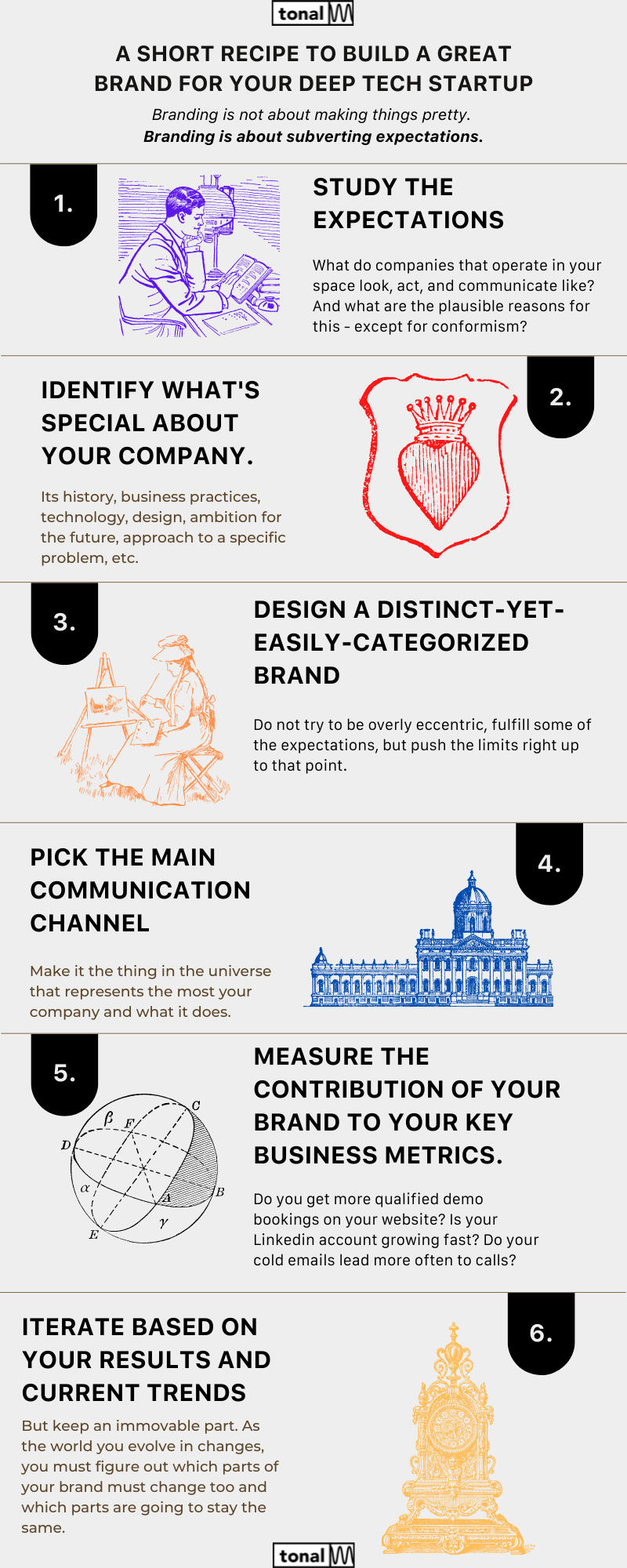1. Is "branding" really critical for deep tech startups?
Spoiler: no.
But that's sort of the point.
4. How to figure out
if your brand
works.
It's not about being pretty.
How to measure how much your brand contributes to your business?
5. When / How much should you work on your brand?
Actionnable advice to design, strenghen and profit from your brand.
Is "branding" really
critical for
deep tech startups?
Topic:
Defining branding
Why you need to distinguish yourself.
You're not designing cashmere pants, CBD vapes or anything like that, so do you really need to care about "branding"?After all, you're not selling to the masses, you only have to deal with a few rational decision-makers who really couldn't care less about your pretty logo or whatever I'm about to talk about here.But branding is powerful precisely because it is not essential.

A flower is a weed with an advertising budget.- Rory Sutherland
Branding is another name we give to something pretty universal: signalling.We want, we need ressources from other people.They, too, want things from us. So to figure out who we can trustfully trade resources with, we rely on signals - implicit indications that we possess valuable traits or assets.Even flowers signal, by developing energetically-expensive colors and smells, that they possess tasty treats for pollinators. Without signals, it simply wouldn't happen.Startups too need to signal to different parties, with different interests, that they're a good bet.This is the big idea behind branding.Skilfully designed, a brand can turn an abstract idea into concrete reality. It can convince and coordinate dozens, hundreds, or millions of people to help you build the future you want.
The 2 purposes of branding:
You do not need to concern yourself with branding at all to build a deep tech startup. Most do not, and some of them manage to do ok anyway.But it is actually because it is not necessary that it is so powerful.For a deep tech company, branding serves 2 purposes:1. Indicating to your business partners that you're invested in whatever you're building.2. Signalling to key individuals that you're building things to serve them in particular.Asking for financial capital from investors, time, energy, and losses of opportunities from skilled employees or leaps of faith from prospects is not an easy task.But people are always more likely to trust those who care. These people are in for the long-term, they take pride in what they do and they want to be more than just another supplier. They want to be the star of their own shows. And because they believe so much in their vision, the rest of the world starts to believe as well.This is what branding can do for deep tech startups.

Do you doubt the good people at Bohn cared a lot about what they were doing? Or about who they wanted to work with?
Who are you
talking to?
Topic:
How can branding address the fears
and aspirations of the people you need to build
your deep tech startup?
Before thinking about what to say or how to say it, you need to be aware of who you're saying it to.Potential business partners are hard to convince because working with unproven deep tech startups is more likely than not going to lead to a negative ROI for them. Branding is about signaling to them that you're the exception.

The tl;dr
"Every universe, our own included, begins in conversation.”- Michael Chabon
Performance branding starts with figuring out what different kinds of people truly want from you, and how what you're building can help them reach their own objectives.There are 3 types of business partners we're especially concerned with:
- Investors
- Clients
- EmployeesThe commonality between these 3 is that you need some very rare and valuable resources from them (significant financial capital or time) but on the flip side, you cannot offer that much in exchange just yet. You're a risk.To design a great, effective brand, you need to identify the objectives, the fears of the organizations you're dealing with, AND those of the people working in these organizations - which may differ.
Fundraising
Investors are critical to the success of deep tech companies whose MVPs typically take a lot of time and capital to build.
Investors are not looking for merely good companies. They're looking for exceptional, singular companies that could make up for all the losses they expect from the rest of their portfolio.But deep tech startups are not great bets for professional investors:- Analyzing them requires deep domain knowledge
- They're more dependent on external capital
- They take a longer time to mature
- They rarely get to the top of the value chain of their industry, ie. they tend to become decent suppliers more than market makers.In short, investors fear that your deep tech startup is just an expensive R&D program that they'll sell for an underwhelming price to a large corporation.Your branding should implicitly address and counter this apprehension. It should also evolve with time, because you'll need to convince investors multiple times, and they like to see you've made progress.At the individual level, remember that professional investors fear looking foolish more than anything. They want to respect and admiration from their colleagues.


Commercial leads
Clients are a heterogeneous category, but they're likely the hardest business partners you'll have to convince. They're busy, and hard to reach, so your unproven, sometimes not-actually-built-yet solution will be a tough sell.If you manage to speak with prospects (which is hard enough), you'll face 5 typical objections preventing you from signing deals:- They do not need what you're building
- They do not have a budget
- This is not the right time for them
- They're not thrilled by your solution
- They don't trust you or your solutionThese problems are annoying, but only the last 2 are fatal: A lack of excitement or a lack of trust.The corollary is that even if they don't necessarily need what you're building right now and are in a tough spot financially if what you're building is exciting and they trust you to deliver, you might still manage to sell your solution.To sell, your branding should excite, and your branding should create trust.
Talent
When it comes to employees, deep tech startups have to attract and retain highly-skilled workers who are offered opportunities to work at more prestigious, much better-funded organizations with greater compensation and generally more upside for their careers. Convincing these people to join you sends a reassuring message to your other commercial partners (investors and clients), but here too, you're offering a risky gamble.Great workers pay hefty opportunity costs by choosing unstable startups over more comfortable positions. But - other than preexisting kinship - there are rational reasons why they might do so anyway:- A desire to work on more impactful things
- A strong belief in the financial potential of a startup
- A great, enriching team
- A challenging or inspiring missionYour branding shouldn't try to make your startup appear bigger or more stable than it is. It should challenge these people to let their risk-taking, trailblazer, and creative instincts loose.It's ok for them to think that they may be having an easier, more comfortable time somewhere else. But they won't join if they don't believe the experience will make them grow as a professional, and even as a person.

Once you've identified the interests and concerns of your key partners, you're ready to take action and build a brand bright enough to attract and convince them to support you.There are a lot of ways to do so.
"All appearances are real and negatio; sophistical:
All reality must be sensation.”- Immanuel Kant
Branding is not about making things pretty. It is about making things feel special to key people.Sometimes, you make things feel special by making them pretty. But not always.Branding is about subverting expectations.People identify patterns in their daily lives: investors and prospects are sent sales pitches every day...Great branding can cut through the noise to grab the attention of the people you want to partner with and make them perceive what you're doing in a favorable way.------------The short recipe to build a great brand:- Study the expectations: what do companies that operate in your space look, act, and communicate like? And what are the plausible reasons for this - except for conformism?- Clearly identify what's special about your company. Its history, business practices, technology, design, ambition for the future, approach to a specific problem, etc.- Design an identity and write guidelines about your marketing and communication to make your brand feel the most distinct-yet-easily-categorized possible. Do not try to be overly eccentric, fulfill some of the expectations, but push the limits right up to that point. Do not worry too much about the quality of your outputs for now (content, design elements, etc.)- Pick the main communication channel (a website, a physical space, a Twitter account, etc...) and apply the branding you designed - make it the thing in the universe that represents the most your company and what it does.- **Embed your brand in everything you do and standardize **, from the content you produce to- Figure out how to measure the contribution of your brand to your key business metrics. Do you get more qualified demo bookings on your website? Is your Linkedin account growing fast? Do your cold emails lead more often to calls?- Iterate based on your results and current trends, but keep an immovable part. As the world you evolve in changes, you must figure out which parts of your brand must change too and which parts are going to stay the same. When something is working - ie. when it leads to good business outcomes - dedicate a bit more resources to it.

Exhibit #1 - Yamauchi No. 10 Family Office
Family offices are private wealth management advisory firms that manage wealth, investments, and trust services for wealthy individuals or families.Like most companies managing a lot of money, they’re usually boring.Which makes sense - making things boring is the easiest and most sure proof way to not make them scary. When you handle a lot of money, scary is not a good adjective.But because the core of their offer is undifferentiated, capital providers need to compete for attention and signal other desirable features of their service.This is what the Yamauchi No. 10 Family Office (from Nintendo’s founding family) does particularly well. The firm’s website is a great branding device and goes well beyond the stock photos and cliche copy of most of its peers.Their opinionated statements and the boldness of their design are a very strong signal for their potential business partners.
Exhibit #2 - Geohot
George Hotz is a famous hacker who would probably be both amused and embarrassed to be mentioned in a resource about branding.But I make the rules here.Hotz founded a deep tech startup but I'd like to focus on his personal website.While this is certainly not most people's idea of great branding, this one-page, pure HTML website comprising of less than 50 words perfectly signals who Hotz is.His love of technology just for itself, his rebelliousness or even recklessness, his unseriousness...Once again, branding is not about making things pretty, it is about making things feel special to key people.
Exhibit #3 - The Boring Company
Hard to not mention anything by the most famous deep tech founder on Earth.The Boring Company is far from being the only tunnel boring company in the World, but I highly doubt you can name another one.Musk's enormous popularity plays a huge part, but The Boring Company is not only famous, it is also quite different from its peers - his branding is modern and quirky in the usual Musk style (the website has a visible "not-a-flamethrower" section).Which may explain why the CERN and many cities specifically asked the compnay to help them with their respective projects. Chances are older, more established tunnel boring companies are more experienced and could manage such projects more effectively, and yet, when they want to build innovative infrastructure projects, a lot of organization first think about The Boring Company.Other tunnel boring companies probably never had to think that much about branding, and yet, as it turns out, it can even make something as seemingly as dull as industrial tunnel-making interesting and grow its market.The Boring Company is a great example of the idea that a brand can be designed through a lot of different medium: Every Musk tweet, the compelling backstory about the spontaneous origins of the company, the punny name, the enticing storytelling about their ambitions to use their technology on Mars... All of this contributes to a solid brand.
Deep tech startups do not need to track the same branding metrics as consumer companies, but you still need some feedback to understand how much your branding effectively helps you reach your business objectives.
"Plan, organize, integrate, motivate, and measure.”- Peter F. Drucker
There are two dimensions of your brand you need to measure: how distinct it is, and how effective it is to achieve the results you seek.Distinctiveness refers to how unique your brand feels compared to similar organizations. It can be measured by what marketers call brand awareness metrics: the extent to which customers are able to recall and recognize the brand.Effectiveness refers to the ability of your brand to increase the volume of leads, shorten the sales process, grow your margins and generate business opportunities.Most deep tech startups do not need to use any overly sophisticated tools to track these two qualities over time, but there are ways to simply measure them.
Distinctiveness
Here is a simple framework that may help you figure out how distinct your brand compared to other organisations'.It is not meant to be overly rigourous, but rather to help you get a clearer idea of your current situation.
| Dimension | Question | Elements to leverage | Exemples | Evaluation metrics |
|---|---|---|---|---|
| Awareness and Usage | How familiar are people with your brand and its purpose? How easily do they associate specific cues with your brand? | Media channels (Social media, appearances in magazines, content creation like newsletters or Youtube videos, advertising, etc...) | What companies do you associate the most with the words "vaccine", "AI" or "computer vision"? The companies you think about score very high on this dimension. | Salience in the mind of a sample of relevant people when presented with a specific cue (0 to 10). |
| Imagery | Which tangible or intangible elements do consumers associate with your brand? | Graphic identity, Typical consumer stereotype, Location, Slogan... | Dall•E's colored squares watermark, | Distinctiveness from a sample of companies operating in the same space (0 to 10). |
| Feelings | Which feelings do your brand ignites in consumers? | f | Reliability ("Nobody ever got fired for buying IBM"), Wonder (OpenAI, SpaceX...), Craftiness () etc... | |
| Resonance |
| Dimension | Question | Elements to leverage | Exemples | Evaluation metrics |
|---|---|---|---|---|
| Awareness and Usage | How familiar are people with your brand and its purpose? How easily do they associate specific cues with your brand? | Media channels (Social media, appearances in magazines, content creation like newsletters or Youtube videos, advertising, etc...) | What companies do you associate the most with the words "vaccine", "AI" or "computer vision"? The companies you think about score very high on this dimension. | Salience in the mind of a sample of relevant people when presented with a specific cue (0 to 10). |
| Imagery | Which tangible or intangible elements do consumers associate with your brand? | Graphic identity, Typical consumer stereotype, Location, Slogan... | f | Distinctiveness from a sample of companies operating in the same space (0 to 10). |
| Feelings | Which feelings do your brand ignites in consumers? | f | Reliability ("Nobody ever got fired for buying IBM"), Wonder (OpenAI, SpaceX...), Craftiness () etc... | |
| Resonance |
Distinctiveness
Here is a simple framework that may help you figure out how distinct your brand compared to other organisations'.It is not meant to be overly rigourous, but rather to help you get a clearer idea of your current situation.
wip














